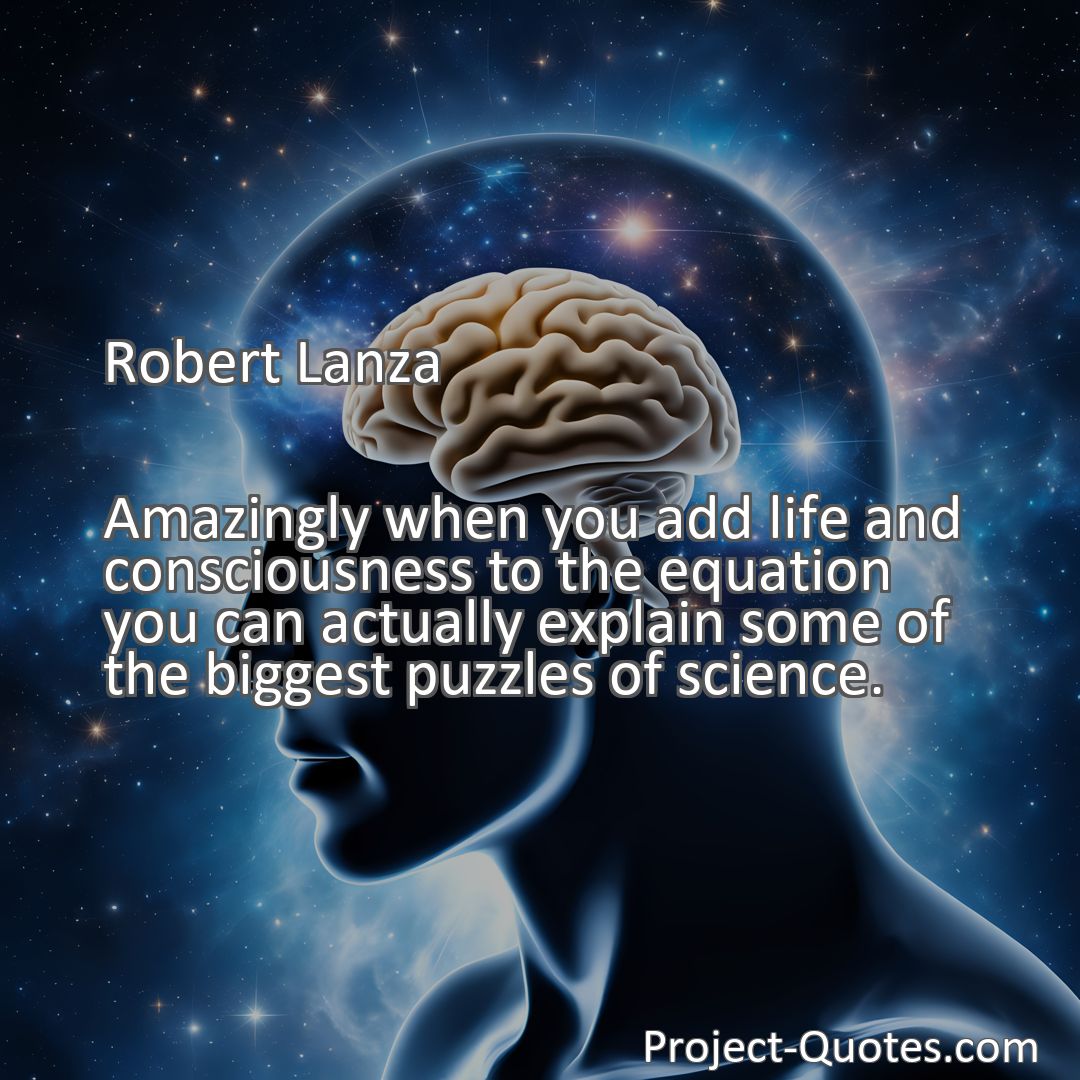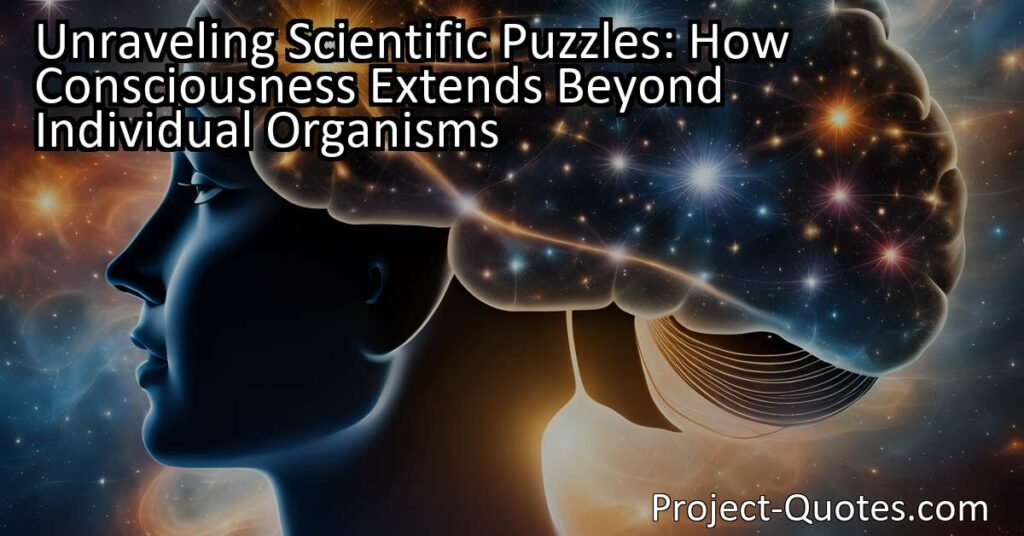Amazingly when you add life and consciousness to the equation you can actually explain some of the biggest puzzles of science.
Robert Lanza
Unraveling Scientific Puzzles: How Consciousness Extends Beyond Individual Organisms Discover the secrets of science by exploring how consciousness extends beyond individual organisms. By considering the impact of life and awareness, scientists gain insights into the mysteries of life’s origin, the complexities of the human mind, and even the behavior of particles in quantum mechanics. Adding consciousness to the equation unlocks new avenues of understanding and helps us unravel the biggest puzzles in science.
Table of Contents
- 1 Amazingly when you add life and consciousness to the equation you can actually explain some of the biggest puzzles of science.
- 2 Robert Lanza
- 3 Meaning of Quote – Amazingly when you add life and consciousness to the equation you can actually explain some of the biggest puzzles of science.
- 4 Freely Shareable Quote Image
- 5 Related
Meaning of Quote – Amazingly when you add life and consciousness to the equation you can actually explain some of the biggest puzzles of science.
Have you ever wondered about the mysteries of science? How do natural phenomena happen? Why do things work the way they do? These questions have puzzled scientists for centuries, but it turns out that the key to unraveling these mysteries might be simpler than we thought.
In the quote above, the author highlights the importance of adding life and consciousness to the equation when exploring scientific puzzles. This means that when we consider living organisms and their awareness of the world around them, we gain a deeper understanding of how things work. Let’s delve into this idea and explore how life and consciousness can help us make sense of some of the biggest puzzles in science.
One of the fascinating puzzles that science tries to explain is the origin of life itself. How did life emerge on Earth? This question has perplexed scientists for ages, but the addition of consciousness to the equation presents a new perspective. Conscious beings, like us humans, have the ability to think, reason, and observe. By studying the behavior and cognitive abilities of living organisms, scientists can gain insights into how life could have started.
For instance, the study of natural selection and adaptation helps us understand how life has evolved over time. Living organisms have adapted to their environments in order to survive and reproduce. By observing these adaptations, scientists can piece together the puzzle of how life forms have diversified and thrived on our planet.
Another puzzle that science seeks to explain is the nature of the human mind. What gives rise to our thoughts, emotions, and consciousness? Our understanding of the brain and its functions has greatly evolved, but there is still much to uncover. By studying the workings of the brain and the neural networks within it, scientists are gradually unraveling the mysteries of human consciousness.
Consciousness plays a vital role in understanding other aspects of science as well, such as quantum mechanics. Quantum mechanics deals with the behavior of particles at the smallest scales. One of the peculiar properties of quantum mechanics is that particles can exist in multiple states at once, known as superposition. But when a conscious observer measures or observes these particles, they collapse into a single state. This phenomenon, known as the observer effect, demonstrates how consciousness can directly influence the behavior of particles.
Moreover, consciousness is not limited to humans alone. Animals, too, possess varying degrees of consciousness. By studying animal behavior and cognition, scientists gain insights into the complex social structures, communication systems, and problem-solving abilities found in different species. This knowledge not only helps us understand the richness of life on Earth but also allows us to appreciate the interconnectedness of all living beings.
Additionally, the concept of consciousness extends beyond individual organisms. It can also be applied to the collective consciousness of communities and societies. When groups of individuals come together with a common purpose, their collective consciousness drives progress and change. For example, the environmental awareness movement has brought attention to the impact of human actions on the planet. By raising collective consciousness about environmental issues, individuals and communities can work towards sustainable solutions and a healthier planet.
In the grand scope of the universe, the addition of life and consciousness to the equation can help explain the existence of complex systems such as galaxies, stars, and planets. The sheer vastness and intricate organization of the cosmos raises questions about its origins and structure. While scientists continue to study celestial bodies and cosmological theories, the understanding of life and consciousness offers a unique perspective. It makes us ponder whether there may be other conscious beings out there, contemplating the same puzzles from a different corner of the universe.
In conclusion, the quote emphasizes the significance of integrating life and consciousness into the realm of science. By considering the impact of living organisms and their awareness, we gain a deeper understanding of various scientific puzzles. From unraveling the mysteries of life’s origin to exploring the complexities of the human mind, consciousness plays a crucial role. It allows us to observe, think, and reason, providing insights into the fundamental workings of the universe. So, next time you’re pondering a scientific puzzle, remember to add life and consciousness to the equation and unlock new avenues of understanding.
I hope this quote inspired image brings you hope and peace. Share it with someone who needs it today!


